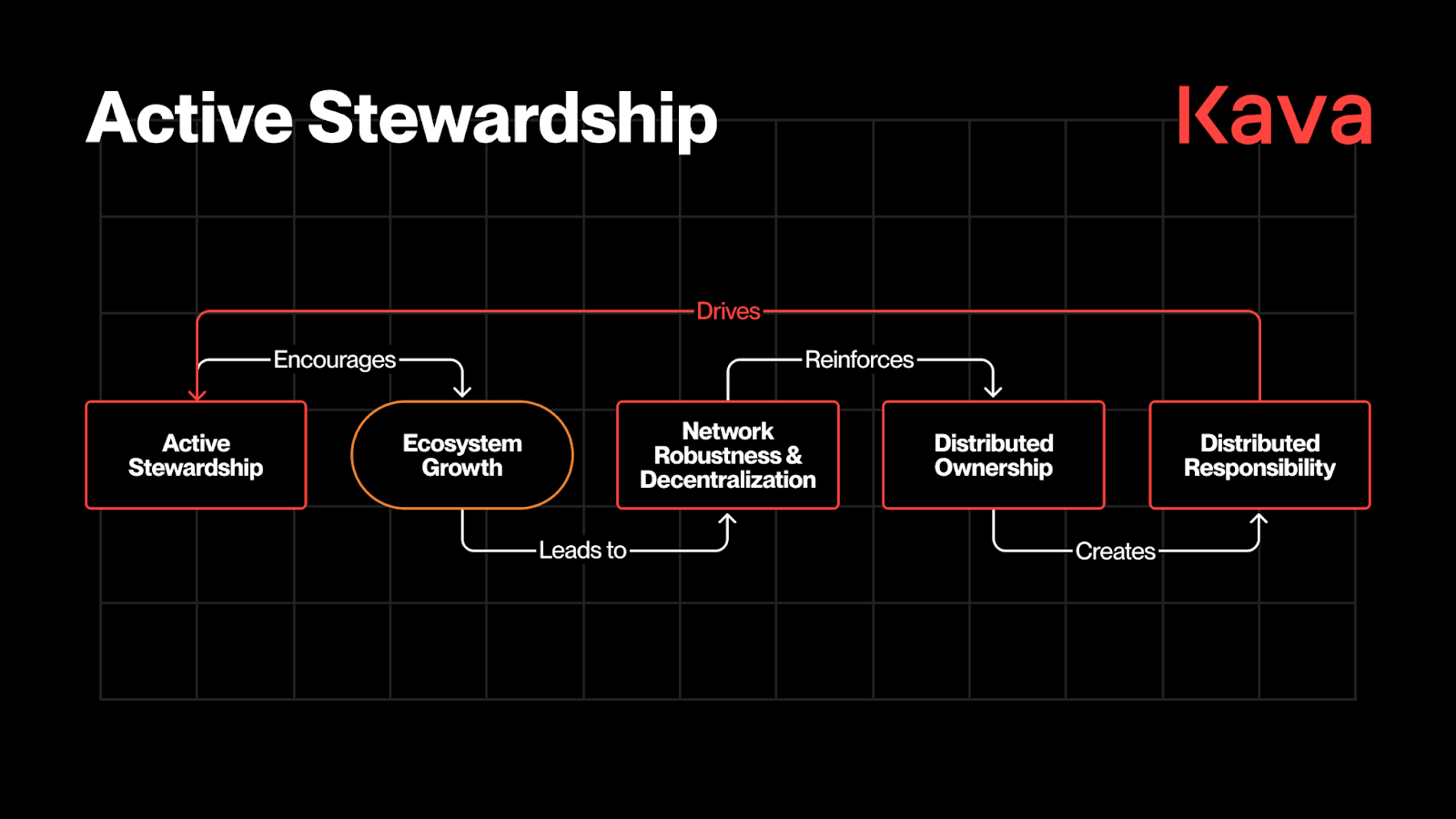Blockchain Stewardship: Strategic Resource Distribution

Institutional capital has fundamentally changed the dynamics of blockchain infrastructure around strategic asset deployment. While Layer 1 blockchains previously had large token holders leveraging their influence to dictate development, foundations have adopted a more institutional-friendly approach. With increasing legal and regulatory requirements, blockchain stewardship is becoming the go-to treasury management architecture for institutionally preferred blockchain projects.
Blockchain Stewardship Fundamentals
The concept of blockchain stewardship is rooted in the custodial nature of foundations. Foundations can establish a regulatory-compliant vehicle for institutional money to enter Web3 by adhering to market rules and compliance standards.
With new regulatory-compliant frameworks, foundations face a fundamental challenge at the heart of any decentralized blockchain project. How can they allocate resources to strengthen decentralization and innovation while maintaining compliance and network security? Strategic resource deployments (Stewardships) are a method to do this. They are the infrastructure around the strategic distribution of network assets.
Benefits of Stewarded Asset Distribution
Stewardships allow resources to flow to active and engaged participants rather than concentrating them in just the hands of early investors and founding teams. When assets are distributed to validators, developers, and community contributors, networks benefit from increased security through broader validator participation and enhanced innovation through diverse development efforts.
This approach creates a virtuous cycle where distributed ownership leads to distributed responsibility. Active participants who receive resources through stewardship programs have stronger incentives to maintain network health, contribute to governance discussions, and build applications that expand the ecosystem.

Stewardships, while being custodians and a concentration of assets, actually improve overall security by reducing single points of failure among major holders whose interests may diverge from the broader community over time. Stewardships act more as facilitators than direct controllers of assets because they operate with clearly defined legal responsibilities outlined in SLAs, preventing them from introducing bias into distribution decisions or acting against the interests of the broader community. By deliberately distributing assets across developers, validators, and community participants, blockchain foundations create networks that are less vulnerable to individual decisions and more responsive to collective needs.
Supporting Broader Community Participation
Stewardships can take various forms to support different aspects of blockchain networks. They can allocate funds to developers building applications, validators securing the network, or community projects expanding the ecosystem's capabilities.
Utilizing stewardships for strategic developer grants allows a broader pool of builders to contribute to blockchain ecosystems without requiring independent funding. This opens opportunities to developers in regions with limited access to traditional funding sources and empowers projects that might not fit conventional investment criteria.

Validator support programs similarly expand participation by helping smaller operators by providing resources for infrastructure, education, and operational costs. Strategic investments from stewardships allow networks to promote validator diversity and deter centralization of consensus power among a few large players. This lowers the barriers to entry for validators, strengthening the network by creating a more accessible and resilient ecosystem.
Community projects benefit from stewardship in several ways. They create a more engaged network by funding a larger, more diverse range of innovative projects, while providing additional transparency to foundations' accounts. Meanwhile, educational initiatives can be supported to grow the user base, research projects advance technical capabilities, and infrastructure investments improve network performance.
Case Studies
Solana Ecosystem Grants
Solana's ecosystem grant program exemplifies strategic resource distribution. The foundation distributes SOL tokens to developers building applications across multiple categories, from decentralized exchanges to gaming platforms. Validators also receive support through delegation programs and infrastructure grants that help maintain network security. This dual approach ensures that both the application and consensus layers benefit from distributed resources.

Polkadot’s Treasury Model
Polkadot's on-chain treasury represents a decentralized approach to resource allocation. The treasury accumulates funds through transaction fees and inflation, then distributes them based on community governance votes. Projects submit proposals detailing their contributions to the ecosystem so that token holders can decide on which initiatives receive funding. This model has supported the development of parachain infrastructure, developer tools, and community education programs while maintaining community-driven allocation processes.

Cosmos Hub’s Interchain System
The Cosmos Hub takes a collaborative approach to resource distribution by supporting projects that strengthen the entire interchain ecosystem. Rather than focusing solely on applications built directly on the hub, Cosmos allocates resources to teams developing independent blockchains that connect through the Inter-Blockchain Communication protocol. This strategy reduces concentration on a single chain while building a network of interconnected and interoperable blockchains.
Future of Blockchain Stewardships
The rise of blockchain foundations has opened up new opportunities for networks looking to strengthen and diversify their token disbursement strategies. Stewardships provide an effective solution while maintaining the core principles of blockchain decentralization. They are less concerned with controlling the assets than with facilitating community-driven allocations, all while enabling better alignment among developers, validators, and community applications.
Stewardships provide the necessary infrastructure for a more robust and accountable strategic distribution model within blockchain foundations. With the surge in demand for blockchain technology among institutions, stewardships will play a critical role.
